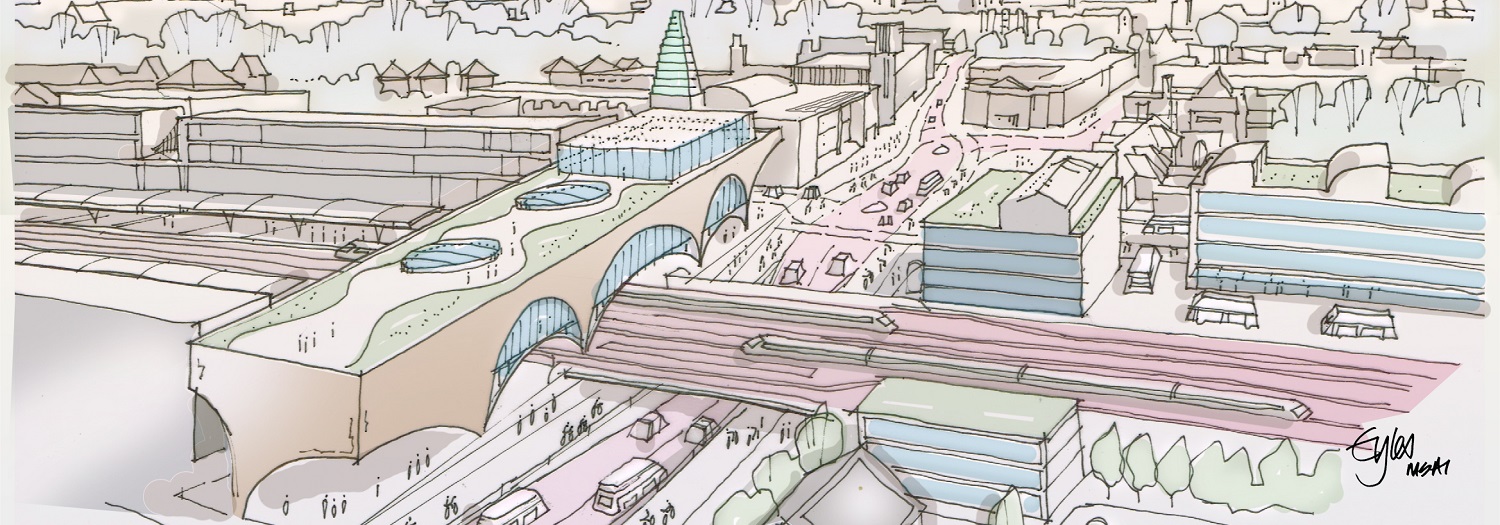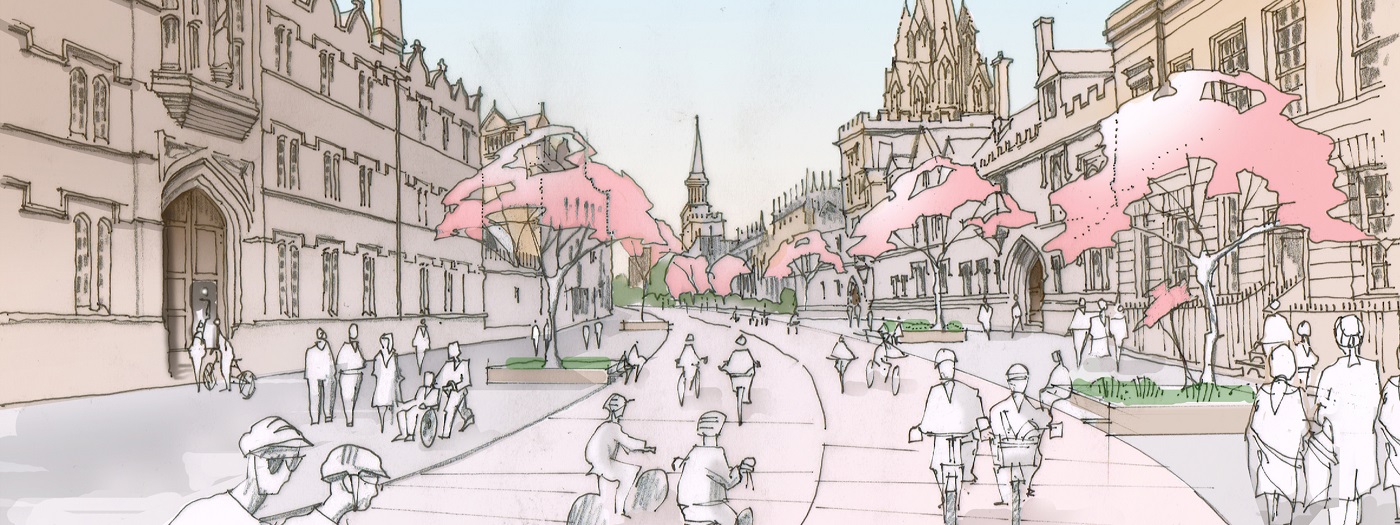Oxford2050: Transport and connectivity

- Oxford will be better connected to the region and nationally
- People will be able to move around the city easily in non-polluting ways
- Streets will prioritise pedestrians and cyclists
In 2050 Oxford will be well connected – locally, nationally and internationally – both physically and digitally.
With the completion of the Oxford-to-Cambridge expressway and East West Rail, Oxford will be closely linked to the key knowledge-economy towns and cities across the ‘knowledge arc’, including Milton Keynes and Cambridge. Transport links to London, airports and the South Coast ports will also be improve, better connecting Oxford to the world.
“More integrated transport networks across the Oxfordshire ‘Knowledge Spine’, to the Oxford-Milton Keynes-Cambridge ‘Growth Corridor’ and destinations like London, the Midlands, Heathrow, and the South Coast Ports will serve to maximise the city’s world-class assets and appeal.”
Councillor Ian Hudspeth, Leader of Oxfordshire County Council (in 2017)
More housing in and near Oxford will mean people can live close to workplaces and key services, but those choosing to live further afield, visitors and tourists will be able to affordably, quickly and easily access Oxford via frequent trains, buses and more versatile mass-transit systems. These will connect to the city’s transport network at hubs near the city centre, such as the park and rides or Oxford Parkway, Cowley, Hanborough and Culham train stations.
“Transport in 2050 must involve more public provision, and lots of really good quality cycling and walking. The asthmatic wheeze of the internal combustion engine should be a distant memory.”
Councillor Andrew Gant, Leader of the Liberal Democrats on Oxford City Council (in 2017)
People will have a range of transport options within the city boundaries – walking and cycling will be prioritised, together with affordable, convenient and integrated mass-transit options and shared, driverless vehicle systems. These will connect Oxford’s edge-of-city transport hubs to the city centre, communities, shops, workplaces, hospitals, universities and schools.
Personal and internal combustion vehicles of all kinds will be restricted from Oxford city centre, but Oxford will remain accessible to all through mass-transit and shared systems.
Taking inspiration from Copenhagen and Amsterdam, roads across Oxford will be split between the different transportation types, with priority given to walking and cycling. All main roads with sufficient space will have wide and safe footpaths, and segregated and safe cycle superhighways for pedal-powered and electric bikes.
Individuals will no longer have to own private cars as car sharing across electric vehicles will be widespread. This will have freed many residential streets of parked vehicles, and created more space for cycle parking, benches, trees, and leisure and cultural activities. Personal parking will be available in communal underground car parks on the edge of the city.
“The shift away from cars towards bikes (primarily) and public transport (secondarily) can help solve three key issues which Oxford faces: air quality, congestion, public health.”
Connor, Oxford OX3
Charging infrastructure will be sufficient for all vehicles types, so that petrol and diesel vehicles will no longer be required – improving air quality across the city dramatically.
More food and other goods will be produced locally and when longer supply chains are necessary, heavy goods vehicles will deliver to hubs on the outskirts of Oxford, from which small, zero-emission vehicles will transport goods into the city during defined hours. Tradespeople will be able to access the city using zero-emission vehicles.
“The centre of Oxford in 2050 is virtually car free. The focus is on the human, not on the machine. We look back on our early 21st century selves with bemusement that we should have turned some of Europe’s finest streetscapes into car parks.”
Robin, Oxford OX2
With more people choosing to walk, cycle or use mass-transit systems – and significantly fewer private cars on the road – traffic congestion will be rare, allowing mass-transit systems and emergency vehicles to move more freely through Oxford. With more automated and driverless transport, there will also be fewer road traffic accidents.
Oxford will also have affordable and super-fast internet across the whole city, allowing people to work flexibly from home or remotely from shared hubs, access shared transport technology on-the-move, and better connect with friends, family and the world.


